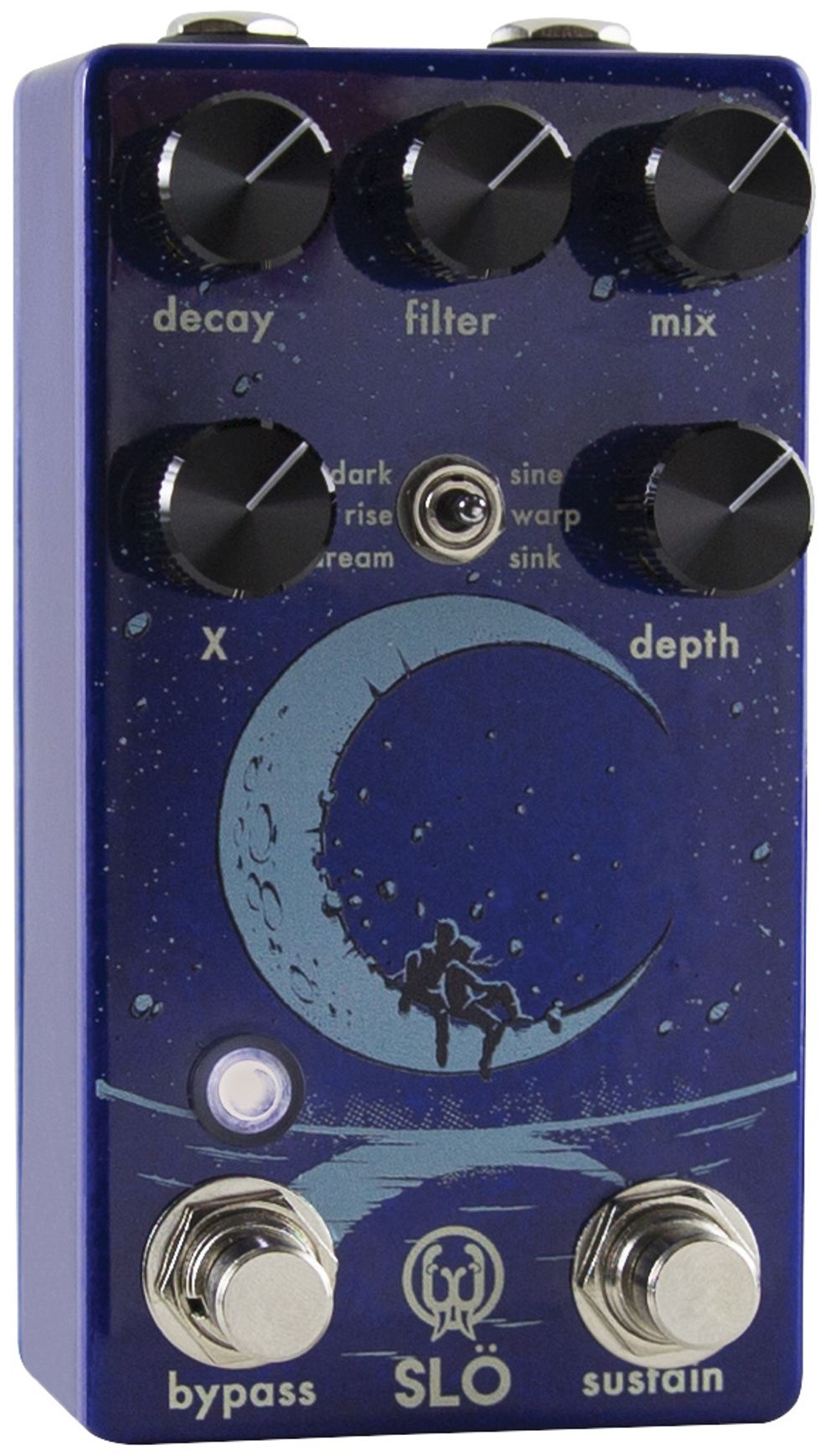RatingsPros:Fresh-sounding ambient tones. Player-friendly interface. Excellent build quality. Cons: Mono only. The Spin FV-1 reverb sound can be a matter of taste. Street: $199 Walrus Audio Slö walrusaudio.com | Tones: Ease of Use: Build/Design: Value: |
In recent years, Walrus Audio has released several pedals based on a common theme: pitch-shifted digital reverb. In that regard, Slö is a successor to Walrus’s Descent Reverb/Octave Machine and Fathom Multi-Function Reverb.
Action Verbs
Slö includes three unconventional reverb algorithms and the tools to morph them in a generous assortment of ambient effects. Dark mode pitch-shifts your signal down an octave before feeding it through reverb. Dream mode permits “latching” the reverb for sustained freeze effects. Rise is an auto-swell mode that delays note attack in the manner of the old Boss SG-1 Slow Gear pedal before routing it through reverb. Since this mode slows the attack of the wet signal, it can mimic the SG-1 sound (and lots of luck finding a used SG-1 for less than Slö’s list price).
Wrangling sophisticated digital effects via a stompbox interface sometimes forces designers to choose between a bewildering number of knobs, or fewer knobs with bewildering multiple functions. Slö strikes a canny compromise by using five knobs and one toggle. The top knob row controls the basic reverb settings. The second row modulates them. In addition to the expected reverb depth and wet/dry mix controls, a filter knob trims highs for warmer tones—its exact parameters varying according to mode. A clever design detail: When pressed and held, the bypass switch momentarily activates the reverb. That’s great for adding a touch of reverb only to selected passages.
The X Factor
Like the filter knob, the X knob’s role is also contextual. In dark mode, it determines the amount of octave-down signal that reaches the reverb. In dream mode, it regulates modulation depth. In swell mode, it sets the rise-time speed.
Speaking of modulation, with the bypass switch held down, the mode toggle selects from three modulation patterns: sine (simple up-and-down vibrato), warp (pitch-up modulation only), and sink (downward modulation only). The bypass/toggle function also allows you to switch the depth knob’s role from modulation intensity control to modulation speed. It’s a powerful yet easy-to-grasp interface. The demo clip showcases some typical settings.
The Big Spin
Slö’s sonic palette is wide and varied, thanks to its use of the multi-faceted Spin FV-1 chip. The FV-1 doesn’t generate hi-fi digital reverb effects. (Spin reverb often sounds grainy and shallow to me, but apparently many guitarists disagree. They’re certainly buying tons of Spin-based stompboxes!)
Still, the Spin tones can be quite workable when heard through a signal chain with multiple distortion stages and amp/speaker coloration—especially when accompanied by bass, drums, or other instruments. Even 100 percent wet settings can yield useable tones, and the chip is surprisingly good at interpreting chords as well as single notes. (As an example, check out the sequence of wet-only triads at 0:24 in the demo clip.)
Slö resides in a standard 125-B enclosure. It’s nicely made, with classy metal knobs and high-quality soft-touch relay switches. It runs on standard 9V power supplies. (Adapter not included.) There’s no battery compartment.
The Verdict
Slö is an intriguing reverb effect capable of many striking tones. The implementation and interface are user-friendly. The reverb quality, while not stellar to my ears, is par for the price range. If you relate to its spacy/dreamy textures, Slö more than merits a place on your pedalboard.
Watch the First Look:














![Rig Rundown: Russian Circles’ Mike Sullivan [2025]](https://www.premierguitar.com/media-library/youtube.jpg?id=62303631&width=1245&height=700&quality=70&coordinates=0%2C0%2C0%2C0)





